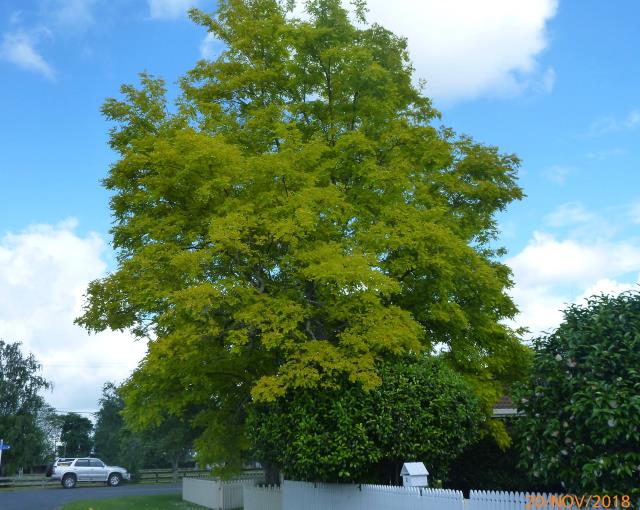
Black locust (Robinia pseudoacacia)
Originally a native of the Allegheny Mountains, USA, this broadly columnar, deciduous tree is now widespread throughout the Americas, Europe and Asia. Its Latin name is after the head gardener to Henri IV and Louis XIII of France, Jean Robin (1550 -1629), who received plants from Canada. Its common name was given to it by Jesuit missionaries in the Americas who thought it was the tree that had supported St John in the wilderness, not knowing that it was neither a true locust, nor native to the Middle East!
Growing to between 30 and 50 feet in height, it is suitable as a medium garden or street tree. Pollution-tolerant, its height lends proportion to the streetscape. The delicate compound leaves turn yellow in autumn and are not a problem to dispose of. In spring, it has drooping racemes of white, scented flowers which look rather like wisteria and are attractive to bees. Indeed in the eastern USA Robinia is a major honey plant. In autumn, flowers are followed by pea-like pods about 100mm long.
In New Zealand Robinia is mainly grown as an ornamental tree, but around the world it is put to many practical uses, a veritable one-stop-shop. Traditionally the Cherokee used the beans as an emetic, and a painkiller for toothache. It also has astringent, diuretic and sedative properties. The flowers contain benzaldehyde, which has an almond-like odour. They are used in Romania to make an aromatic jam, and in Italy and France they are battered and fried in oil. The deeply furrowed grey bark is yellow inside and is used for dyeing. The wood is hard and strong, rot resistant, and competes with hickory for its high-lustre finish. It is used in boat building, flooring, furniture making, veneer, and also railroad ties and mine timbers. In India, Robinia is grown in coppiced plantations, completing the harvest cycle in a mere 27 years. It will grow in most well-drained soils and with its dense root system is excellent for erosion control, while its nitrogen-fixing abilities enrich poor soils.

